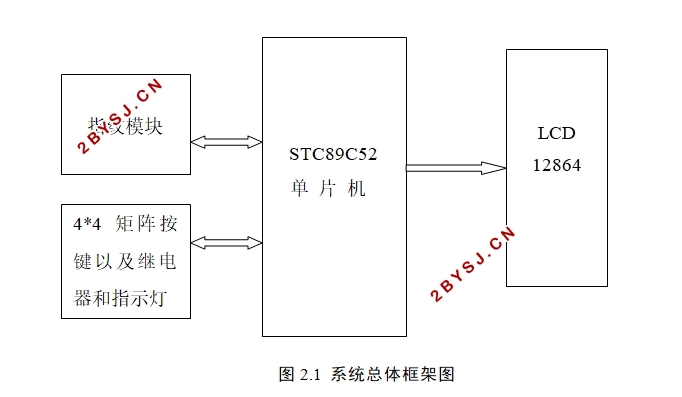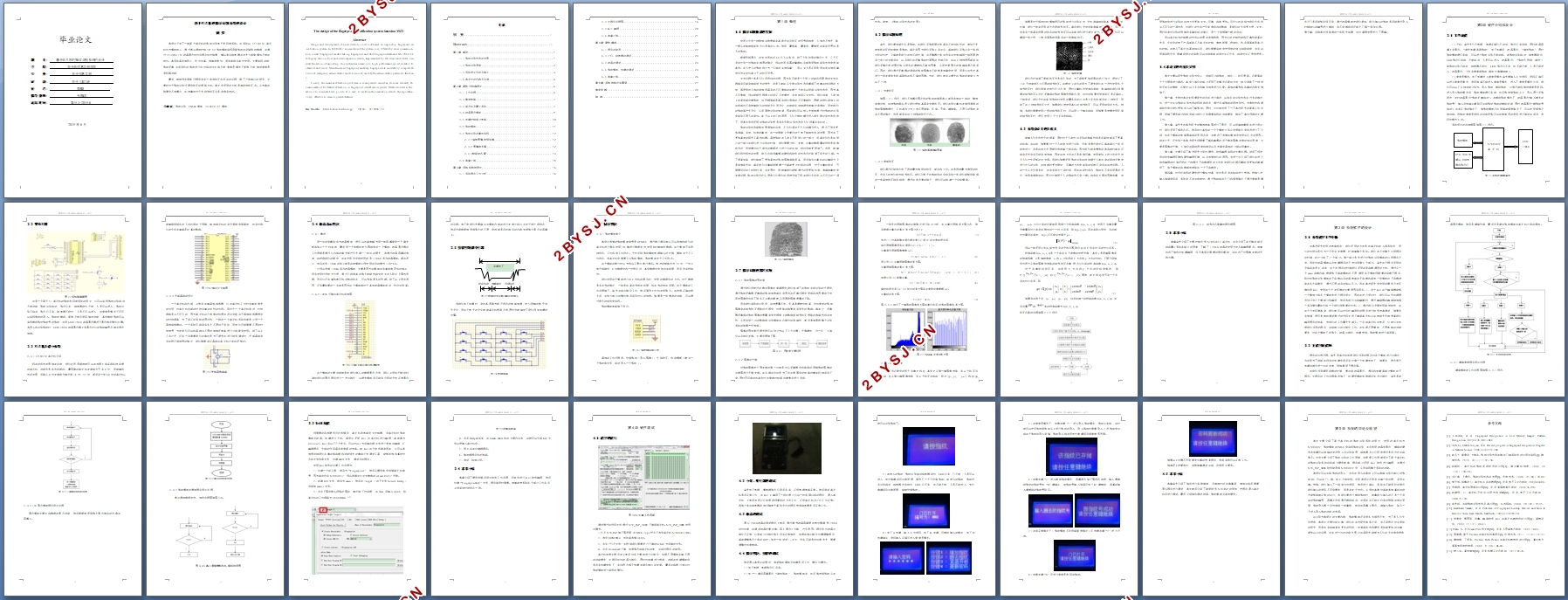基于单片机的指纹识别系统的设计
无需注册登录,支付后按照提示操作即可获取该资料.
基于单片机的指纹识别系统的设计(任务书,开题报告,外文翻译,论文10600字)
摘 要
本设计开发了一款基于单片机的指纹识别电子密码锁系统。该系统以STC89C52单片机作为模块核心,通过串口通信控制FM-60指纹模块实现录取指纹并存储指纹数据,并通过HS12864-15C液晶显示比对流程及比对结果,辅以直流继电器与发光二极管模拟开锁的动作。本系统具有体积小、性价比高、传输速度快、适合家庭及单位使用。主要实现功能:指纹采集;与保存好的指纹进行比对成功则完成开锁;管理员模式下紧急开锁;修改管理员密码等功能.
最后,就细节点提取过程中会有一些伪特征点存在的问题,做了一些相应的研究,主要针对于指纹识别过程中特征的提取方法。本文中采用的方法是消除伪特征点。从仿真的结果中不难看出,这种算法对于去除伪特征点是非常有效的。
关键词:指纹识别 FM-60模块 HS12864-15C模块
The design of the fingerprint identification system based on MCU
Abstract
Design and development of a new electronic code lock based on single-chip fingerprint ide-ntification system. In STC89C52 as a module of the system core, \FM-60 by serial communica-tion control fingerprint module taking fingerprint and store fingerprint data and HS12864 LCD display ratio on flow and intercomparison results, supplemented by DC relays and LEDs sim-ulate the action of unlocking. This system has a small size, high performance,speed,suitable for families and units. Main functions:fingerprint; and keep fingerprints to successfully complete the unlock;emergency administrator mode to unlock; modify the administrator password functions.
Finally, the minutiae extraction problems in some pseudo minutiae, do some research, the main method for feature extraction in fingerprint identification process. Methods used in this article is to eliminate false points. It is easy to see from the simulation results, the algorithm is very effective to remove pseudo features.
Key Words: Identification Ltechnology; FM-60; HS12864-15C


目录
摘 要 I
Abstract II
第1章 概述 1
1.1 指纹识别技术的发展 1
1.2 指纹识别原理 2
1.3 系统设计目的及意义 3
1.4本论文的内容及安排 4
第2章 硬件介绍和设计 6
2.1 工作流程 6
2.2 整体电路 7
2.3 单片机及最小系统 7
2.4 液晶显示模块 9
2.5 按键控制部分电路 10
2.6 指纹模块 11
2.7 指纹识别的算法实现 12
2.7.1指纹图像的预处理 12
2.7.2 图像的平滑 12
2.7.3特征点匹配 13
2.8 本章小结 15
第3章 系统软件的设计 16
3.1 系统程序工作分析 16
3.2 主程序流程图 16
3.3 Keil编程 20
3.4 本章小结 21
第4章 硬件调试 22
4.1 程序的烧写 22
4.2 小灯、继电器的调试 23
4.3 液晶的调试 23
4.4 指纹模块、按键的调试 23
4.5 本章小结 26
第5章 系统的结论及展望 27
参考文献 28
致 谢 29
